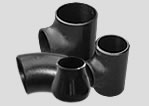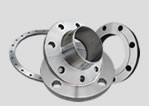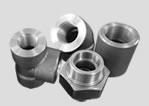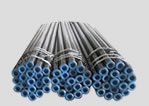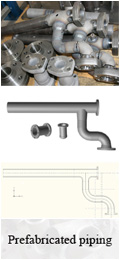Different types of oil casings are used in the process of oil exploitation
Different temperature control is selected for oil casing in different temperature section, and heating needs to be carried out according to certain temperature. AC1 of 27MnCrV steel is 736 ℃, AC3 is 810 ℃, tempering temperature is 630 ℃ after quenching, and tempering heating holding time is 50min. The heating temperature is selected between 740 ℃ and 810 ℃ during sub temperature quenching. The sub temperature quenching temperature is 780 ℃ and the holding time is 15min; because the sub temperature quenching is heated in the α + γ two-phase region, the toughness can be improved while maintaining the temperature. Oil casing is the lifeline of oil well operation. Due to different geological conditions, the downhole stress state is complex, and the tension, compression, bending and torsion stresses act on the pipe body comprehensively, which puts forward higher requirements for the quality of casing itself. Once the casing itself is damaged for some reason, the production of the whole well may be reduced or even scrapped. According to the strength of the steel, the casing can be divided into different grades, namely J55, K55, N80, L80, C90, T95, P110, q125, V150, etc. Different well conditions and well depths lead to different steel grades. In corrosive environment, the casing itself is required to have corrosion resistance. In places with complex geological conditions, casing is also required to have collapse resistance and microbial erosion resistance. The special oil pipe is mainly used for drilling oil and gas wells and transporting oil and gas. It includes oil drilling pipe, oil casing and oil pumping pipe.
Oil drill pipe is mainly used to connect drill collar and bit and transfer drilling power. Oil casing is mainly used to support the wellbore during drilling and after completion, so as to ensure the normal operation of the whole well after drilling and completion. The oil and gas at the bottom of oil well are mainly transported to the surface by pumping tubing. Between the length of L C and the vanishing point of thread, it is allowed that the defect does not extend below the cone of thread bottom diameter or is not greater than 12.5% of the specified wall thickness (whichever is larger), but no corrosion product is allowed on the surface of thread. The outer chamfer of pipe end (65 °) shall be complete on the 360 ° circumference of pipe end. The chamfer diameter shall make the thread root disappear on the chamfer surface instead of on the end face of pipe, and there shall be no edge.
The outer chamfering of the pipe end is 65 ° to 70 ° and the inner chamfering of the pipe end is 360 ° and the inner chamfering is 40 ° to 50 ° respectively. If there is any part that is not inverted, the chamfering shall be manually filed. The casing is inserted into the borehole and fixed with cement to prevent the borehole from separating the strata and borehole collapse, and ensure the circulation of drilling mud, so as to facilitate drilling and exploitation. Steel grades of oil casing: H40, J55, K55, N80, L80, C90, T95, P110, q125, V150, etc. Casing end processing form: short round thread, long round thread, trapezoidal thread, special thread, etc. It is mainly used to support the wellbore during drilling and after completion, so as to ensure the normal operation of the whole oil well after drilling and completion
previous page:How is the square galvanized pipe formed
next pageStamping pipe fitting elbow technology


